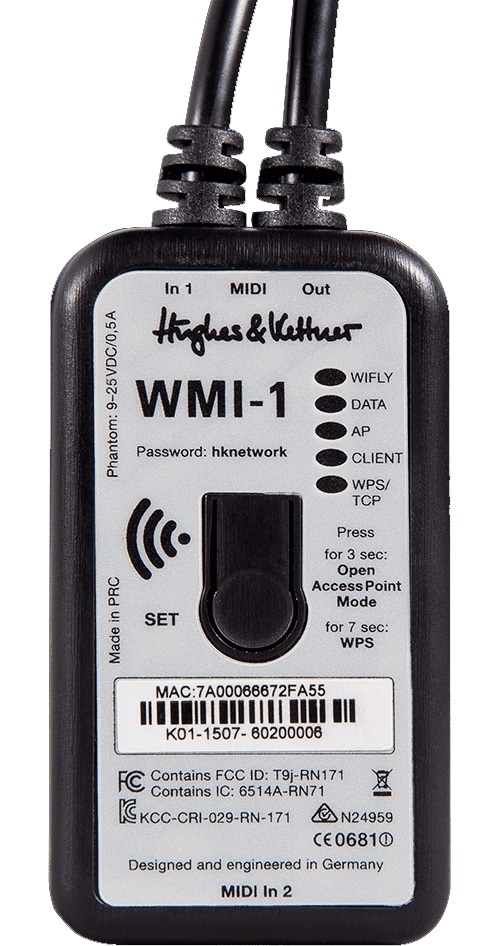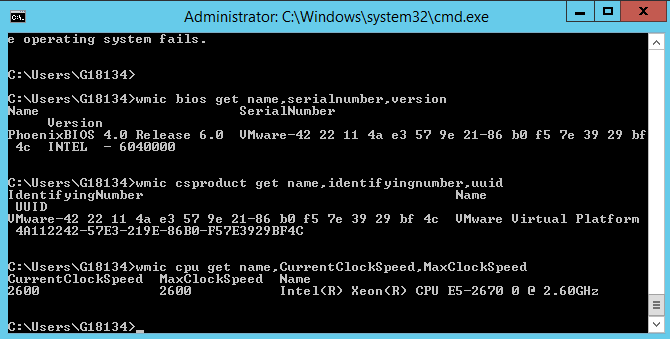Your Mac provides several tools to help you identify it. The simplest is About This Mac, available by choosing About This Mac from the Apple menu in the upper-left corner of your screen. The other is the System Information app. Learn how to use these tools to identify your Mac.
Using Powershell and WMI to get the MAC address of Remote workstation It has cropped up from time to time that we need to retrieve information, in this example, the MAC address from remotely located workstations. But SNMP has some significant differences from WMI, and there are a lot of WMI features that SNMP doesn't support. There is a newer alternative called WBEM (web-based enterprise management). (Coincidentally, WMI is actually the MS implementation of WBEM for Windows.) The OpenPegasus project is an open-source WBEM implementation. WMIC or Windows Management Interface Command is a simple command line tool used to issue WMI commands. WMI command generally used to query all of the system related information like Computer Name, BIOS Serial Number, Mac Address etc. WMIC provides two type of usage. WMI namespaces are system objects with their own ACLs. If you go to the WMI MMC snap-in (accessed via the Manage Computer interface) and access the properties for a namespace, there will be a security tab. The account using WMI functionality on the machine needs to have sufficient access via this security.
If you don’t have your Mac or it doesn’t start up, use one of these solutions instead:
- Find the serial number printed on the underside of your Mac, near the regulatory markings. It’s also on the original packaging, next to a barcode label. You can then enter that serial number on the Check Coverage page to find your model.
- The original packaging might also show an Apple part number, such as MGEM2xx/A (“xx” is a variable that differs by country or region). You can match the Apple part number to one in the list below to find your model.
List of Mac mini models

Mac mini models are organized by the year they were introduced, starting with the most recent. Click the model name for detailed technical specifications.
Mac mini models from 2014 and newer can run the latest version of macOS. For older models, the latest compatible operating system is noted.
2020
Mac mini (M1, 2020)
Model Identifier: Macmini9,1
Part Numbers: MGNR3xx/A, MGNT3xx/A
Tech Specs: Mac mini (M1, 2020)
User Guide: Mac mini (M1, 2020)

2018
Mac mini (2018)
Model Identifier: Macmini8,1
Part Numbers: MRTR2xx/A, MRTT2xx/A, MXNF2xx/A, MXNG2xx/A
Tech Specs: Mac mini (2018)
User Guide: Mac mini (2018)
2014
Mac mini (Late 2014)
Model Identifier: Macmini7,1
Part Numbers: MGEM2xx/A, MGEN2xx/A, MGEQ2xx/A
Tech Specs: Mac mini (Late 2014)
User Guide: Mac mini (Late 2014)
2012
Mac mini (Late 2012)
Model Identifier: Macmini6,1; Macmini6,2
Part Numbers: MD387xx/A; MD388xx/A, MD389xx/A
Newest compatible operating system: macOS Catalina 10.15.7
Tech Specs: Mac mini (Late 2012)
User Guide: Mac mini (Late 2012)
2011
Mac mini (Mid 2011)
Model Identifier: Macmini5,1; Macmini5,2
Part Numbers: MC815xx/A; MC816xx/A, MC936xx/A
Newest compatible operating system: macOS High Sierra 10.13.6
Tech Specs: Mac mini (Mid 2011)
User Guide: Mac mini (Mid 2011)
2010
Wmi Equivalent For Mac High Sierra
Mac mini (Mid 2010)
Model Identifier: Macmini4,1
Part Numbers: MC438xx/A, MC270xx/A
Newest compatible operating system: macOS High Sierra 10.13.6
Tech Specs: Mac mini (Mid 2010)
2009
Mac mini (Late 2009)
Model Identifier: Macmini3,1
Part Numbers: MC238xx/A, MC239xx/A, MC408xx/A
Newest compatible operating system: OS X El Capitan 10.11.6
Tech Specs: Mac mini (Late 2009)
Wmi Equivalent For Mac Shortcut
Mac mini (Early 2009)
Model Identifier: Macmini3,1
Part Numbers: MB464xx/A, MB463xx/A
Newest compatible operating system: OS X El Capitan 10.11.6
Tech Specs: Mac mini (Early 2009)